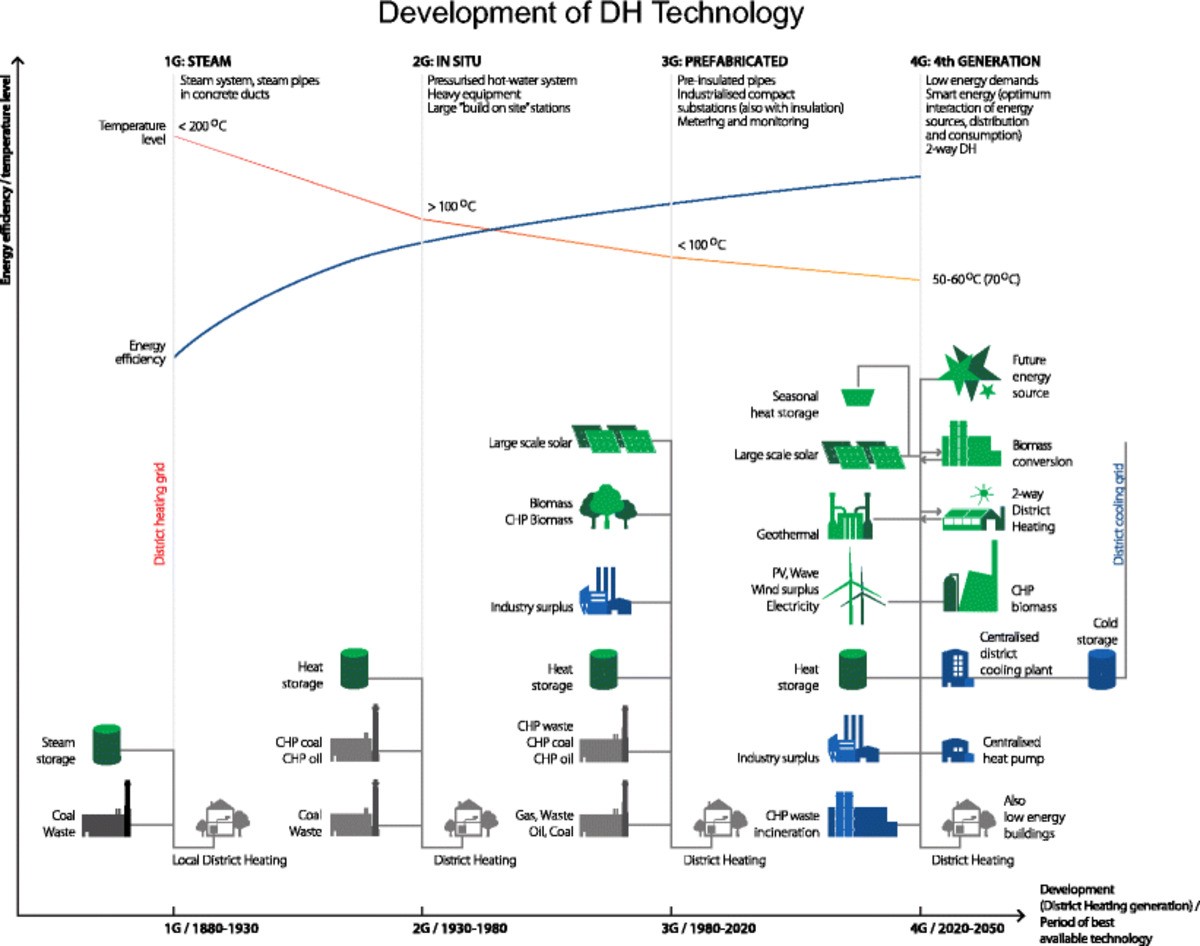Expert talk - Why 'digital'? | Flexharvester
- Construction21 Communication
- /
- the 15-04-2021
- / 208
Expert talk - Why 'digital'?
“Digital district heating networks” obviously do not mean we will be heating digits in the future ("Throw a few more bytes on the fire, Mike, and it will flare up"). But what does it imply then? Well, 'digital district heating networks', written in full 'the digitalisation of heating by using heat networks as a transport medium', are essentially the addition of an information and communication layer on top of the infrastructure of district heating networks, with a high degree of connectivity between the various infrastructure elements.
Generations of district heating networks
District heating networks have been around for quite some time. They exist for more than hundred years, and, just like humans, have evolved into different generations.
The first generation of district heating networks is roughly situated between 1880 and 1930, the second generation between 1930 and 1980, and the third generation between 1980 and 2020. The new generation, the fourth - 4G - emerged in 2020 and is expected to run until 2050. As we have barely started using 4G and, moreover, 4G is not the standard yet: 90% of all new networks being installed in the EU are currently 3G.

Figure 1: Illustration of the concept of 4th Generation District Heating in comparison to the previous three generations [1]
The transition between these generations is represented by disruptive innovations. For 1G → 2G this was the transition from steam to water as an energy carrier, for 2G → 3G: pre-insulated pipes were used, and now we come to 'digital district heating networks' (3G → 4G), adding information and communication technology - ICT -, 'smart energy' to the infrastructure.
You can add ICT to district heating networks in all kinds of ways, both in the design and in the operational phase, when an existing district (...)
News published on FlexHarvester
(Read the full article)
